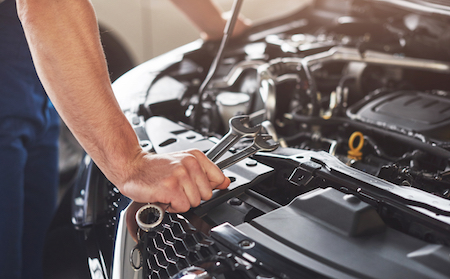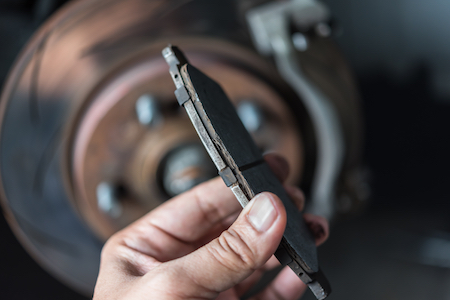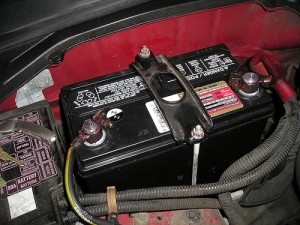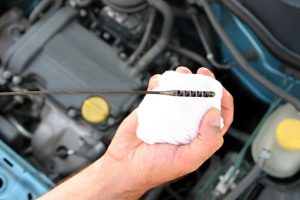Owning an automobile is no longer optional. Here across the Front Range, it would be difficult to live without a car. How would you take the kids to school? How would you run errands? How would you get the family up into the hills for a day of skiing?
A car is something you depend on to get you where you’re going, every day of the week.
The newer the vehicle, the more reliable it is. But even from the moment you drive it off the showroom floor, things start to wear and break down. Every mile allows belts to wear out, tires to wear down, fluids to run low. If you don’t pay attention to the changes in your car’s normal patterns, you’re likely to miss when it starts to tell you things are changing. Action is needed. Or problems will quickly begin materializing.
Car maintenance and repair
Why is car maintenance and repair such an important thing? There are a lot of reasons why you should keep your vehicle in top shape. These are just a few of the many reasons why you should put “taking care of your car” at the top of your to-do list.
Improves safety
While basic car maintenance might not directly stop vehicle accidents from occurring, it can be a contributing factor in many situations. If your tires are bald, for example, you’re more likely to hydroplane and slide in wet or icy road conditions. By keeping all critical components of your car in top shape, your vehicle will handle better, and is more likely to react quickly when you tap on the brake pedal or turn your steering wheel.
Increases reliability
Certain parts of a vehicle will wear more than others. The windshield washer fluid reservoir can only hold a certain amount of fluid. The brake pads will only withstand a certain amount of pressure. Tires will only provide a certain amount of wear before the tread disappears. If you make a conscious decision to check and replace parts before they wear down, your car is less likely to break down when you least expect it.
Decreases your repair expenses
If you don’t put gas into your car before the tank empties, it’ll come to a complete stop, and you’ll be stuck. Every car owner understands that, so they watch the gas gauge and pull into a station before the needle hits the E marker. The rest of your car works in a similar manner, though it’s easier to ignore the warning signs. If you don’t replace motor oil, your engine won’t work at 100 percent efficiency. But it still keeps trying, and that’s when things start happening. Other parts overcompensate to make up the difference. And pretty soon that simple oil change turns into a much bigger problem. If you stick with a car maintenance checklist and you perform routine maintenance on a regular basis, your vehicle will be there when you need it.
Has a higher resale value
When people don’t take care of their car, it shows. When it’s neglected, it may have layers of dirt, parts missing, even sounds you know aren’t good for the car. When you perform car maintenance regularly, even a car that is several years old can appear to be brand new. It shines. It appears to be well cared for. Even when you climb inside or pop the hood, you can see the previous owner didn’t let things fester. And people are willing to pay a higher price, knowing they are purchasing a car that will be reliable from the moment they drive it home.
Is better for the environment
Unless you drive an electric car, you know cars that operate using fossil fuels aren’t running with the cleanest energy source. But if you operate your vehicle the way it was designed, it is operating efficiently. When you make sure your engine has the right amount of oil, for example, it’s not leaking fluid that can absorb into the ground, or sending off emissions that are bad for the environment. It runs as clean as it possibly can.
Checklist for car maintenance
Are you convinced regular car maintenance is the right thing to do?
Are you wondering how to fit regular car maintenance into your already busy schedule? That’s the easy part. With this simple checklist, you can ensure your vehicle is operating as it should for as long as you own the car. Here’s what to do.
Keep your owner’s manual handy
We get it; your owner’s manual isn’t exactly exciting reading. In fact, it can be downright intimidating. Depending on your vehicle, it can be hundreds of pages of detailed information describing every aspect of your car. But it does contain information that can help you keep your car safe and working its best. Take note of the maintenance section. It’ll give you guidelines for the things you need most, such as how often you should change out motor oil and filters, tire rotation, belts, hoses, and more.
Schedule your oil changes
From the beginning, get in the habit of scheduling regular oil changes. It’s the lifeblood of your vehicle. Without it, parts wouldn’t stay lubricated, gears wouldn’t work the way they should, and parts would wear out faster than intended. Pay attention to the manufacturer’s guidelines – what’s the best oil for your make and model? Again, refer to your owner’s manual for guidelines, and trust a reputable mechanic to ensure it’s performed in the proper manner.
Keep an eye on your tires
One of the most important car parts to help keep you on the road is the tires. If they aren’t filled properly, are worn down, or not well cared for, they can blow and increase the chances of having a major accident. Your owner’s manual will tell you proper guidelines for tire pressure. Once a month, check tire pressure and ensure that each tire is filled to proper capacity.
Belts, hoses, and fluids
Especially in the winter, when you use your windshield wipers regularly to clear away moisture and muck, you might run out of windshield wiper fluid enough you even keep a bottle in your car. When you pop the hood to fill the reservoir, take a quick peek at the hoses and belts. Does anything look out of place? You don’t have to be an auto mechanic to tell when something is wrong. If you do this regularly, you’ll recognize when everything is in its proper place, and more importantly, when something doesn’t look quite right.
Car maintenance near me
Regular car maintenance doesn’t have to be difficult or even take a lot of time. Regularity is the key.
When you have a reliable auto mechanic nearby who you can trust to tell you like it is, you’ll have a way to keep your car working in a dependable way.
No matter if you have a problem that needs to be fixed, or just want a second pair of eyes to ensure your vehicle is at its best, stop by today. We’ll help you keep your car in its best condition, so you’ll have one less thing to worry about during your busy days.


 Whenever we are out driving around in our cars, each of us must deal with blind spots. We can greatly minimize blind spots by properly adjusting our vehicle mirrors to give us the widest coverage possible. We should make the adjustments before we pull out of our driveway or parking spot.
Whenever we are out driving around in our cars, each of us must deal with blind spots. We can greatly minimize blind spots by properly adjusting our vehicle mirrors to give us the widest coverage possible. We should make the adjustments before we pull out of our driveway or parking spot.

 Most folks know that car batteries wear out just like any other battery and need to be replaced. There are a couple things drivers should know and keep in mind as a guide to battery replacement. One is cold cranking amps and the other is reserve capacity.
Most folks know that car batteries wear out just like any other battery and need to be replaced. There are a couple things drivers should know and keep in mind as a guide to battery replacement. One is cold cranking amps and the other is reserve capacity.
 As engine technology advances, recommended oil change intervals have gotten longer. High quality oil in a well-engineered engine has led to extended intervals.
As engine technology advances, recommended oil change intervals have gotten longer. High quality oil in a well-engineered engine has led to extended intervals.